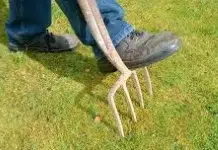 The Royal Spanish Academy ( RAE ) recognizes more than a dozen meanings of the term fork . The concept may refer to a pitchfork : a stick that ends in at least two spikes, used by farmers during their activity.
The Royal Spanish Academy ( RAE ) recognizes more than a dozen meanings of the term fork . The concept may refer to a pitchfork : a stick that ends in at least two spikes, used by farmers during their activity.
A fork is also a stick with two ends that is used to assemble a grapevine or support the branches of a tree and the foot that is used to support a firearm.
Those pieces that have a Y shape, used to rotate or hold other pieces, are called forks. It is possible to find this type of forks in different areas.
On motorcycles and bicycles , the fork is made up of the steering tube and arms that support the front wheel hub. Therefore, this element goes from the handlebar (handlebar) to the wheel axle.
In the case of motorcycles, the fork usually incorporates the front brake and suspension . There are different types of forks, such as the rear fork , the forward fork and the telescopic fork , among others.
Bicycle forks, meanwhile, are usually made of carbon fiber or aluminum . The width of the upper sector gives them resistance, while, at the base, the fork must be thin so as not to absorb vibrations.
If we focus on the automotive industry , the concept of fork is also used to name a part of four-wheeled cars, in particular one that is in the suspension system and is made of aluminum or steel. The fork links a front or rear wheel to the chassis, and its main function is to prevent it from rotating uncontrollably from one side to the other; In other words, it remains parallel to the body of the vehicle.
 Needless to say, car forks must be kept in perfect condition to minimize the risk of road accidents. Use deteriorates them and that is why it is necessary to replace them or, in some cases, repair them. There are different configurations, such as those with only one fork per wheel and those with two, one on the swing arm and one under the hub. The latter allows for more efficient movement without losing alignment.
Needless to say, car forks must be kept in perfect condition to minimize the risk of road accidents. Use deteriorates them and that is why it is necessary to replace them or, in some cases, repair them. There are different configurations, such as those with only one fork per wheel and those with two, one on the swing arm and one under the hub. The latter allows for more efficient movement without losing alignment.
In motorsports , finally, a very tight curve is called a hairpin, which usually generates a turn of about 180° . It is common for the hairpin to appear after a long straight line, forcing sudden braking and, thus, favoring overtaking.
Driving a car is not easy, despite the fact that so many people have access to a license and travel on public roads every day. The two extremes that we must avoid are accidents and non-compliance with the rules; In both cases, paying attention to the environment is essential, as is making good use of the different technical knowledge necessary to master the vehicle, particularly in the face of an unforeseen situation or in the context of a difficult maneuver, such as a very tight curve. .
Hairpins are not normal on public roads, but they are part of some race tracks, and the technique required to successfully overcome them requires a lot of practice and concentration. While at first glance we could determine that the best way to face them would be by tracing a wide arc that coincides at its apex with the central point of the curve, in practice a late turning point is preferred to obtain a good exit. There is usually a lot of time between the corner and the moment at which the rider can accelerate considerably again.
